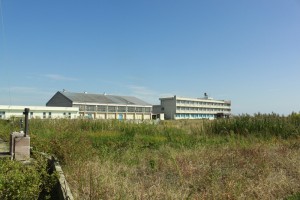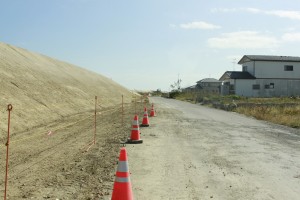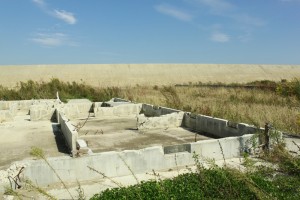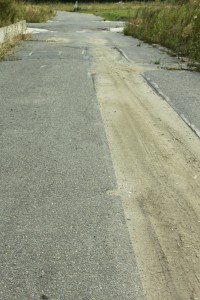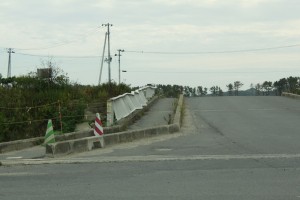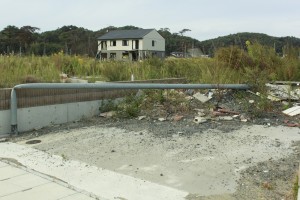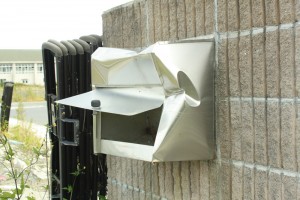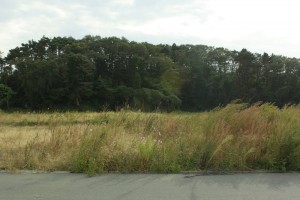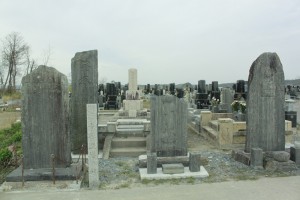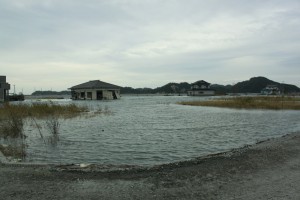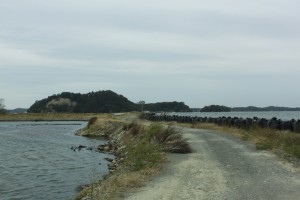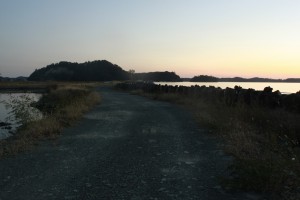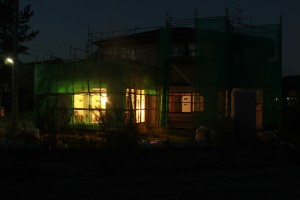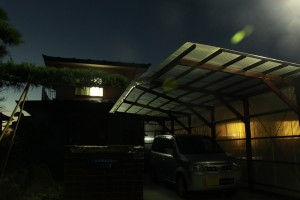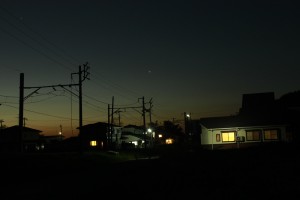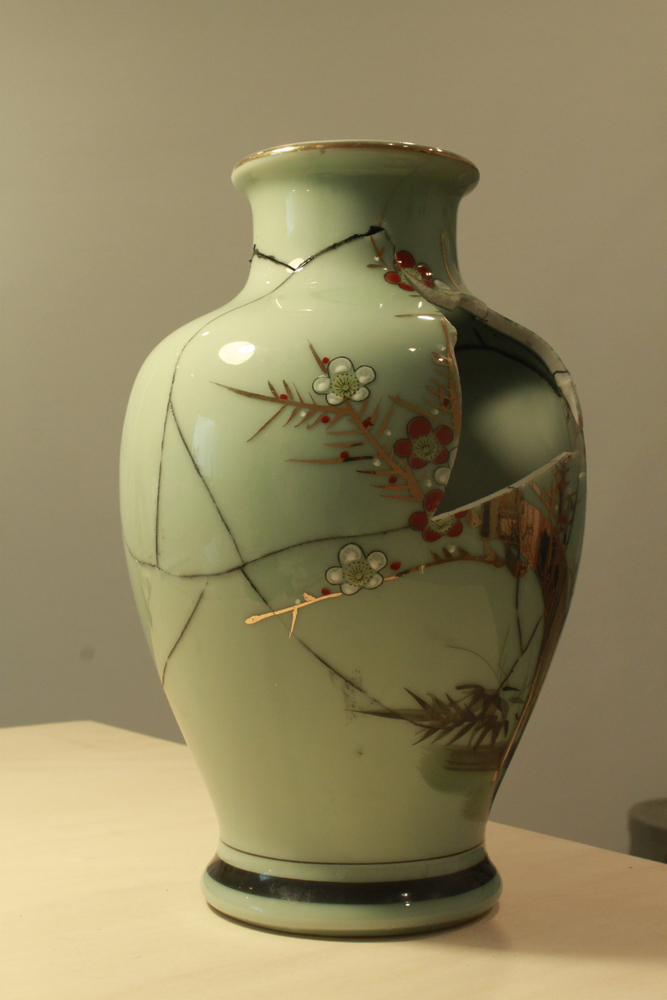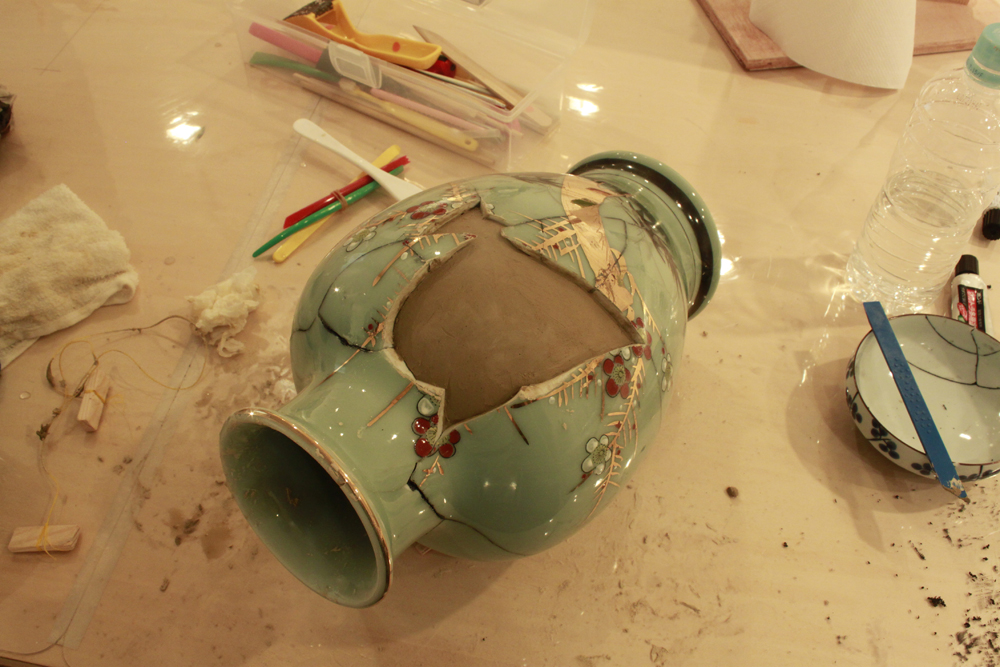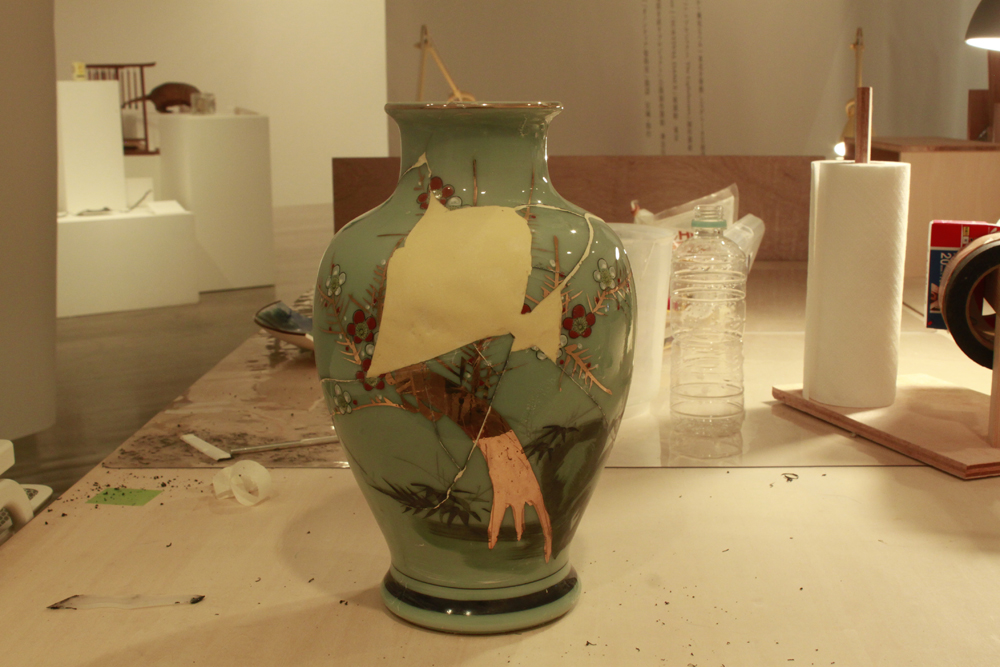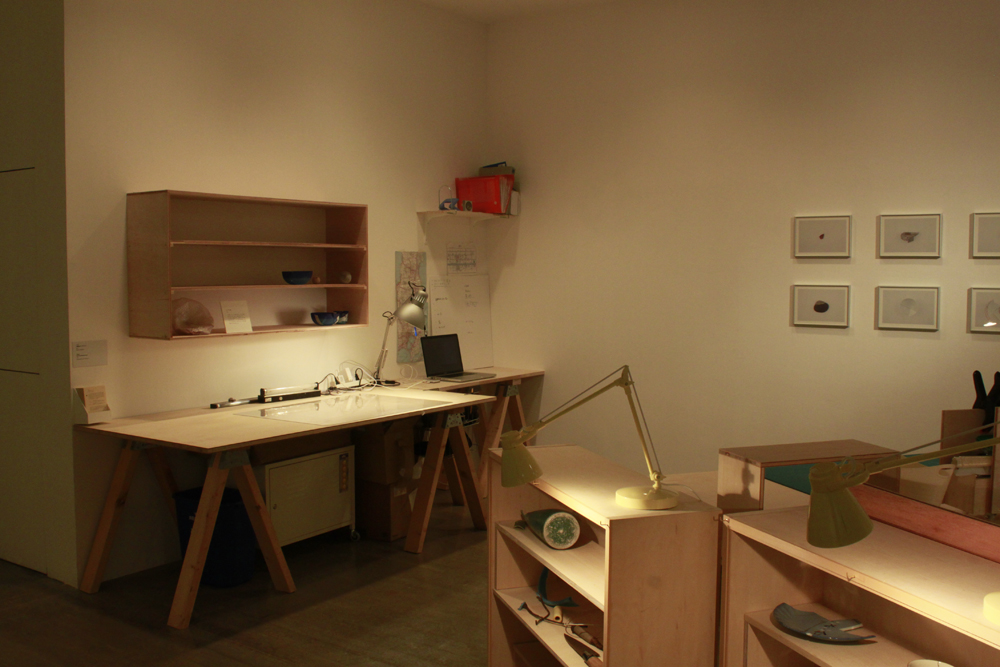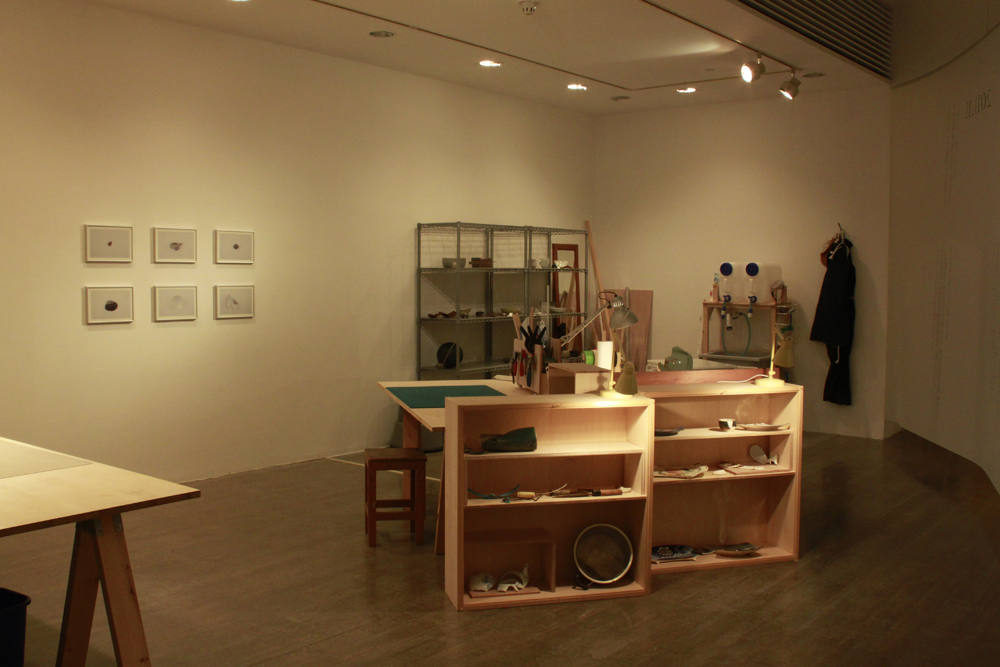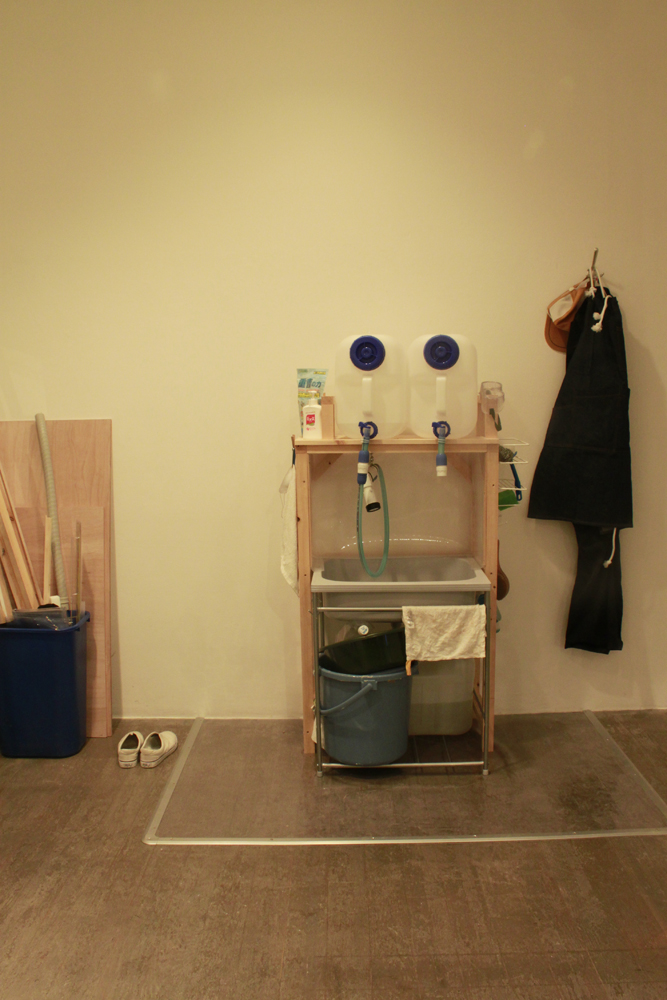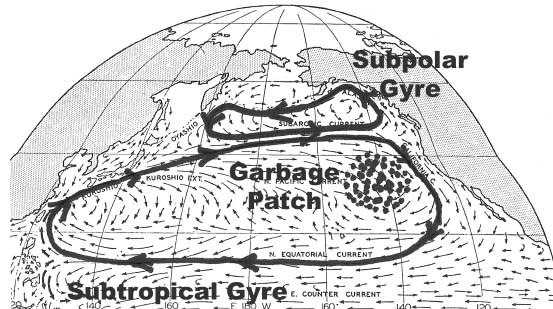16 Oct 2012 宮城到着 Arrived in Miyagi
14 October 2012
13 October 2012 水戸芸のスタジオ Studio in Art tower Mito
13 October 2012 水戸芸術館 Art Tower Mito
3・11とアーティスト: 進行形の記録
2012年10月13日[土]~ 2012年12月9日[日]
水戸芸術館
■企画展
時間の推移を体感する展示構成
2011年3月11日、東日本大震災が発生しました。被災地の内外で市民によるさまざまな支援活動が立ち上がっていくなかで、表現を生業としているアーティストたちも行動を起こしました。本展では、震災を受けて現れた27以上に及ぶアーティストのアクションと表現を、2011年3月から今へ向かって時間軸をたどる形で振り返ります。
「アート」という概念の再定義
工夫に富んだヘドロ撤去活動、コミュニティの立て直しを手伝う継続的なプロジェクト、被災地の状況を撮りつづける記録映像・写真、そしてこの災害によって表出した問題をテーマに扱う作品など。そこには、「アーティスト」というアイデンティティをいったん棚上げにして行われた活動、作品として発表することを前提とせずに行われたプロジェクトなども多く含まれます。こうした作家らの姿勢や行動は、近代が築いた「アート」の概念を問い直し、社会におけるアートのあり方をこれまで以上につよく示すことにとなったといえるでしょう。
「小さな状況」への注目
震災後のアーティストのうごきを聴き取るなかで、彼・彼女らの意欲ある活動の裏には、葛藤や迷いがあったことが明らかになりました。また、時が発つごとに、現地の状況にあわせ活動の内容が変化していったものもあります。それらの多様性、複雑な経緯そして展開は、マスメディアには現れにくい震災後のさまざまな小さな状況を浮かび上がらせ、私たちの戸惑いや逡巡を鏡のように映し出します。あれから私たちは何を考えたか。地域社会における個人とは? 社会のなかの市民とは? そして、あのときの考えは今……。
記憶を紡ぎ、かんがえる装置としての展覧会
会期中、展覧会をとおして未完了・進行形の作家のうごきを見つめ感じたことを、自分の言葉にして対話していく場、また手を動かし表現していくワークショップなど、子どもから大人までが参加できる多彩なプログラムを設けます。こうしたさまざまな企画がそれぞれの入口となり、私たち一人一人が3.11の個人の記憶を紡ぎ、「あれから」を見つめ「これから」を考えるきっかけとなることを望み、本展を開催します。
▼参加作家
荒井良二、遠藤一郎、開発好明、加藤翼、北澤潤、小森はるか+瀬尾なつみ、眞田岳彦、高山明(Port B)、タノタイガ、Chim↑Pom、椿昇、照屋勇賢、トーチカ、中島佑太×ビルド・フルーガス、ニシコ、畠山直哉、日比野克彦、藤井光、宮下マキ、村上タカシ(MMIX Lab)、ヤノベケンジ、山川冬樹、wah document
After the Disaster: Progressing Documentation (provisional title)
Art Tower Mito
October 13, 2012, to December 9, 2012
An exhibition configured to allow visitors to experience transitions in time
The Great East Japan Earthquake struck on March 11, 2011. While citizens organized various activities that offered aid and assistance to victims both inside and from outside the disaster zone, artists who make their livelihood through artistic expression also took action. This exhibition looks back on the actions and artworks produced by 23 artists that emerged as a result of the earthquake, tracing the ways in which their work unfolded between March 2011 and the present in chronological sequence.
Redefining the concept of “art”
The works of these artists include ingenious attempts at sludge removal, ongoing projects that contribute to the rebuilding of communities, documentary videos and photos that continuously record the situation in the disaster-stricken areas, and pieces dealing with problems and issues that emerged as a result of the catastrophe. Many of these encompass activities that were carried out by temporarily shelving one’s identity as an “artist”, as well as projects carried out without the expectation that they would later be exhibited as an artwork. The attitudes and actions of these artists represent a renewed questioning of the concept of art as established by modernity, and demonstrate the sort of role that art ought to play in society – perhaps more strongly and forcefully than ever before.
A focus on the “little situations”
Following the activities of these artists as a result of the earthquake, it soon became clear that a certain sense of conflict and hesitation lay beneath their ambitious projects. At the same time, there were several projects that adapted to local conditions, changing in content as time went by. The diversity of these approaches and the complex ways in which these experiences developed shed light on the various small-scale occurrences that emerged as a result of he disaster ¬– “little situations” rarely picked up by the mass media that seem to reflect our own sense of bewilderment and indecision. What has been on our minds since then? What role should the individual play in relation to the local community and society at large? What does it mean to be a citizen within society? And how have our thoughts and feelings about the disaster evolved since then?
An exhibition that generates memories and functions as a device for thinking
During the exhibition period, there will be a varied program of related events that will allow visitors to express their thoughts after having observed the unfinished and ongoing actions and projects of the various artists on display. There will be opportunities and spaces for people to have free and uninhibited conversations about these issues, and participatory hands-on workshops open to people of all ages will also be held. This exhibition is being held in the hope that these assorted events will serve as different entry points for each person to get involved, helping each of us to generate individual memories about the March 11, 2011 disaster, and prompting us to look back what happened and to reflect on what one should do in the future.
ARTISTS
Ryoji Arai, Chim↑Pom, Ichiro Endo, Hikaru Fujii, Naoya Hatakeyama, Katsuhiko Hibino, Yoshiaki Kaihatsu, Tsubasa Kato, Jun Kitazawa, Haruka Komori + Natsumi Seo, Maki Miyashita, Takashi Murakami (MMIX Lab), NAKAJIMA Yuta×birdo flugas, Nishiko, Takehiko Sanada, Akira Takayama (Port B), Tanotaiga, Yuken Teruya, TOCHKA, Tsubaki Noboru, wah document, Fuyuki Yamakawa, Kenji Yanobe
Art Tower Mito Website
13 September 2012 日本製紙(石巻) Nippon paper (Ishinomaki)
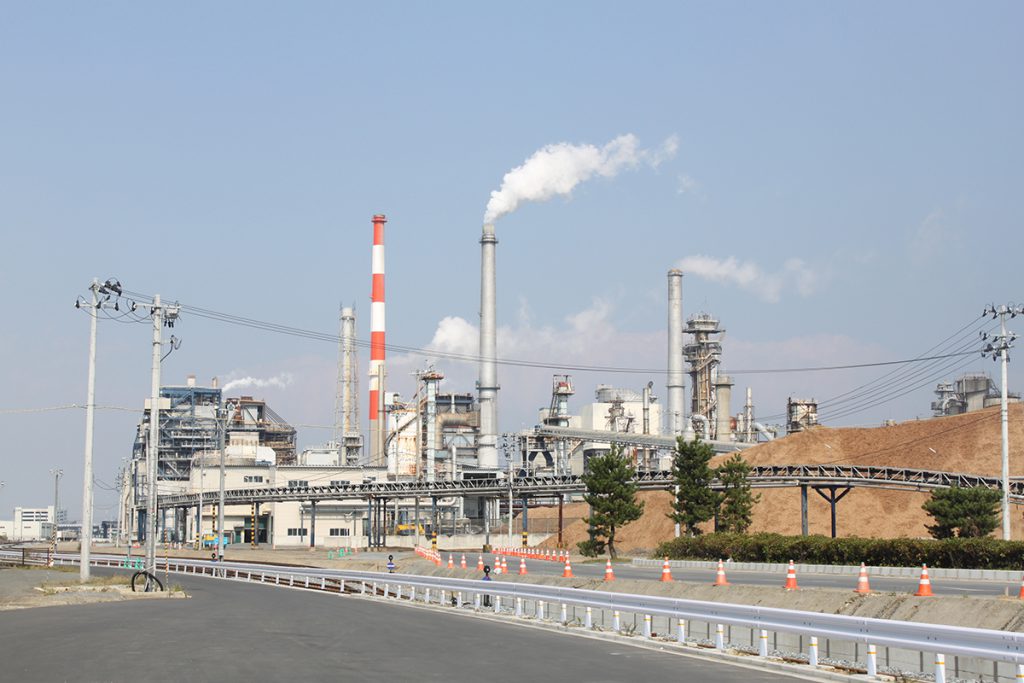
Ishinomaki Mill Fully Restored
Operations resume for Paper Machine N2 and Coating Machine 2
After being affected by the Great East Japan Earthquake, Nippon Paper Industries Co., Ltd. resumed operation of Paper Machine N2 and Coating Machine 2 at the Ishinomaki Mill (Ishinomaki, Miyagi Prefecture) today. As a result, the production capability at Ishinomaki Mill has recovered to around 850,000 tons/year, with all six paper machines and two coating machines at the mill having resumed operations based on the Plan for Paper Business Revitalization released in August of last year.
石巻工場が完全復興
~N2号抄紙機・2号塗工機の運転を再開~
当社は、東日本大震災により被災した石巻工場(宮城県石巻市)において、本日、N2号抄紙機・2号塗工機の営業運転を再開いたしました。これにより石巻工場では、昨年8月に発表した「洋紙事業の復興計画」に基づき復興作業を進めてきた抄紙機6台、塗工機2台がすべて操業を再開し、生産能力は約85万トンまで回復しました。
3 September 2012 Capt. Charles Moore
Algalita’s Tsunami Debris Expedition1
Algalita’s Tsunami Debris Expedition2
Capt. Charles Moore TED Talk, Feb 2009
2 September Ocean Current

The water moves from one reservoir to another, such as from river to ocean, or from the ocean to the atmosphere, by the physical processes of evaporation, condensation, precipitation, infiltration, runoff, and subsurface flow. In so doing, the water goes through different phases: liquid, solid (ice), and gas (vapor).
water cycle (USGS)
2 September 2012 NY times
http://www.nytimes.com/2012/03/13/us/looking-for-tsunami-debris-on-west-coast-beaches.html
March 13, 2012
On West Coast, Looking for Flotsam of a Disaster
By MALIA WOLLAN
SAN FRANCISCO — John Anderson, a plumber by trade and a beachcomber by passion, has been trolling the shores of the Olympic Peninsula in Washington State for more than three decades, and along the way has discovered almost every kind of flotsam one can imagine: toys, refrigerators, even the occasional message in a bottle.
But in recent months, Mr. Anderson has been making a new, and somewhat surprising, find: dozens of buoys marked with Japanese writing, set adrift, he believes, by last year’s catastrophic tsunami.
“That wave wiped out whole towns, I’m thinking just about anything could show up here,” said Mr. Anderson, 58, of Forks, Wash. “I’ve heard people talking about floating safes full of Japanese money.”
The tsunami — which struck after a massive offshore earthquake last March 11 — sent a wall of water sweeping across much of Japan’s eastern coastline and generated more than 20 million tons of debris, a jumbled mass of houses, cars, boats and belongings. And while it’s not clear what percentage of that wreckage was sucked back out to sea and what remains afloat, what is certain is that some of it is slowly making its way to American shores.
Computer models run by the National Oceanic and Atmospheric Administration and by researchers from the University of Hawaii predict that debris has moved eastward from the coast of Japan, driven by currents and wind. The models predict that bits of detritus will begin washing up on the northwestern Hawaiian Islands this springand along the western coast of the United States and Canada in early 2013.
“We don’t think there is a massive debris field out there,” said Nancy Wallace, director of NOAA’s Marine Debris Program. “It will come up in little spurts here and there, a small trickle over years.”
Researchers think most of it will never reach shore and will instead get caught up and broken apart in the “great Pacific garbage patch” a swirling gyre of currents in the middle of the Pacific Ocean known to collect and recirculate floating garbage.
But beachcombers say the debris has already begun to reach land.
“I feel like Paul Revere running through town, saying ‘The British are coming!’ and no lights are coming on,” said a retired oceanographer, Curtis Ebbesmeyer. “The tsunami debris is here, but no one is listening.”
Co-author of “Flotsametrics and the Floating World: How One Man’s Obsession With Runaway Sneakers and Rubber Ducks Revolutionized Ocean Science,” Mr. Ebbesmeyer, 69, also publishes Beachcombers’ Alert, a newsletter on all things flotsam and jetsam. He counts some 10,000 people in the loose-knit network of serious beachcombers who read his newsletter and report their seashore findings to him.

Mr. Ebbesmeyer said he had received more than 400 documented sightings of large black plastic and white Styrofoam buoys found between Kodiak, Alaska, and Humboldt County, Calif. Many of the buoys are marked with Japanese characters, including the names of oyster companies destroyed by the tsunami. The buoys corroborate computer modeling by Mr. Ebbesmeyer and an oceanographer colleague that predicted debris would begin landing as early as last fall.
Despite a rise in interest and reported sightings, officials have not confirmed that any of the items found along the West Coast originated in Japan. “There is debris from Asia that comes to shore all the time, and it’s not necessary tsunami-related,” Ms. Wallace said.
Thus far, only two tsunami debris clusters have been confirmed, a wrecked Japanese fishing boat spotted by a Russian ship that was en route from Honolulu to Vladivostok, Russia, and another vessel located by the United States Coast Guard nearer to Japan.
Finding flotsam over some 5,000 miles of open ocean is not easy. A month after the disaster, the debris was no longer visible in NOAA’s satellite images. To assist in the search, officials have requested higher-resolution satellite images from the National Geospatial-Intelligence Agency, which runs satellite-based mapping and monitoring for the Defense Department. In recent months, NOAA reached out to the commercial shipping and fishing groups, asking boats to report any large debris sightings in the water.
NOAA has also called on a growing cadre of beachcombers to keep a lookout.
Since January, the number of e-mails NOAA has received reporting tsunami debris has increased threefold. The Web page answering frequently asked questionsabout the tsunami gets more visitors than any of the program’s other pages. NOAA also has a smartphone app for tracking debris found on beaches.
Whether tsunami-related or not, officials encourage beachgoers to pick up and properly dispose of any garbage they find. “Radioactivity is extremely unlikely,” Ms. Wallace said, in part because the damaged Fukushima reactor did not begin leaking radioactive material until after the tsunami wave retreated.
Tom Baty, an avid fisherman and a retiree, spends up to three hours a day walking the beaches of Point Reyes National Seashore in California, where he picks up trash and sometimes tracks the location of plastic debris with a GPS device. Mr. Baty, 54, regularly finds tidbits of junk marked with Japanese, Chinese and Korean characters, which makes him skeptical of the reports of tsunami debris up the West Coast.
Still, he said he was curiously awaiting the arrival of any floating evidence of that violent event. Mr. Baty is one of a ragtag army of unofficial seaside detectives who provide useful information on the patterns and whereabouts of ocean garbage to government officials and environmental groups. “You walk up to something on the tide line,” he said, “and you scratch your head and think, ‘Now where did that come from?’ ”
and also http://beachcombersalert.blogspot.nl/
Thank you to Maarten vanden Eynde
15 August 2012 abn.com
The National Oceanic and Atmospheric Administration last month announced that it would be providing $50,000 each to Alaska, California, Oregon, Washington state and Hawaii to help pay for debris removal.
By RICHARD SIMON
Los Angeles Times
Published: August 15th, 2012 10:32 PM
abn.com
… But Sen. Mark Begich, D-Alaska, last month called the $50,000 for Alaska “woefully inadequate.” Alaska plans to spend nearly $200,000 alone on a 2,500-mile aerial survey for tsunami debris.
Oregon spent about $85,000 to remove the dock.
NOAA has received hundreds of reports of debris, from bottles to boats, but traced only 10 items definitively back to the March 2011 earthquake and tsunami that hit Japan. Debris has included a soccer ball found in Alaska and a shipping crate containing a Harley-Davidson motorcycle that washed up in British Columbia.
Havel said that more debris is showing up off the Oregon coast.
He said more debris usually turns up in winter…
Read more here: http://www.adn.com/2012/08/15/2588875/tsunami-debris-from-japan-poses.html#storylink=cpy

